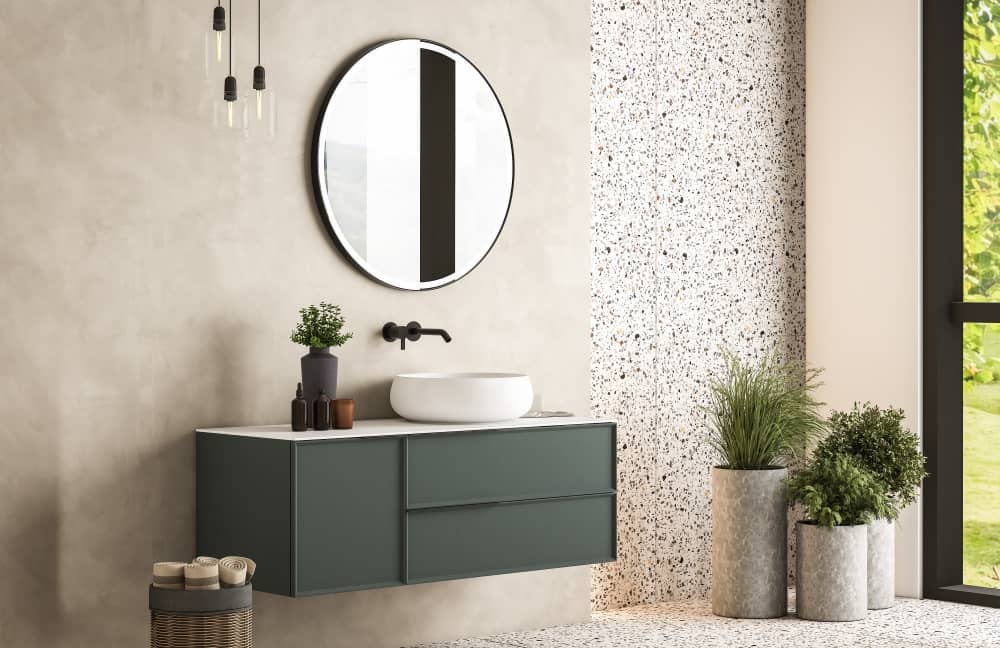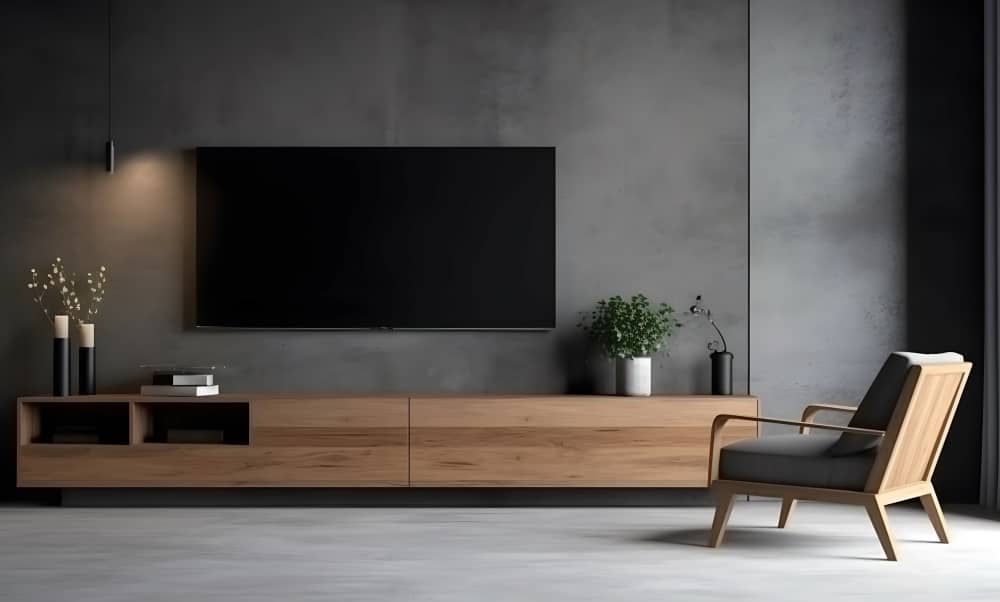The era of concrete in a utilitarian grey hue is a thing of the past. Today, this abundant building material is available in any colour imaginable. Coloured concrete adds vibrance and personality to your concrete driveway, tabletop, floor, or patio. If you’re considering what colour concrete to choose, this blog is for you.
Types of Concrete Colouring
Depending on who you ask, you will get various answers regarding the types of coloured concrete. But we’re here to make it simple by dividing how to colour concrete into two ways:
- Integral: This method involves adding colour directly to the mixed concrete, giving the finished result an even, consistent hue.
- Topical: Instead of having colour mixed into concrete, topical colouring involves the application of colour after the concrete has already been poured. For example, topical application is a better choice if you’re not aiming for consistency and would rather have a stained look.
To achieve several colour options, different means of colouring concrete are used, namely through dyes, pigments, and stains. Although these terms may appear similar, they vary greatly. Let’s take a quick look:
- Dyes are the easiest method of colouring concrete. Available in many colours, dyes are quick to dry and are, therefore, ideal on busy pathways and your concrete driveway. Plus, they are easy to use by simply adding the powdered dye to a solvent or water. Another benefit is that you get the colour you expect. No surprises.
- Pigments are a type of integral concrete colouring as they require you to add them to the concrete before pouring. Remember that once pigment has been added, it can no longer be removed.
- Stains are used to change the tint or shade of concrete. Sometimes, they can even alter the texture of the surface, specifically acid stains that etch the top surface layer through a chemical reaction. Other types are penetrating colours that sink into the pores of concrete and film-forming stains that work similarly to paint.
Colour hardeners may be required, particularly with decorative concrete and stamped concrete, to strengthen and intensify the surface hue. Adding this product can help make the colours last longer as they become more resistant to wear than standard-coloured concrete.
How to Pick the Right Concrete Colour
With numerous colour options to select from, what shade of concrete do I pick for my home? We’re here to answer that question for you. The good news is that concrete is available in all colours that suit your needs. You can have a sleek modern look or a neutral one, such as charcoal, white, or black. If you prefer warmer neutrals, choices include terra cotta and earth tones. These shades can give your home a cosier, more welcoming appeal.
What about a captivating look? Try metallic concrete colours to add an exciting shimmer that captures attention. Use bold colours, such as cool blues and greens or impactful yellows and reds, for a more modern, vibrant appearance.
However, how do you pick the right shade with so many selections? Here are some helpful tips:
- What type of project are you working on?
Most people prefer consistent colouring for their concrete driveway. A good choice here is integral colouring rather than topical application. The same idea is often applied to interior flooring and kitchen tabletops, where cohesiveness is favoured to achieve a more aesthetically pleasing surface.
Suppose your project calls for more artistic flexibility, such as for your patio, garden pathways, and outdoor steps. In that case, topical colouring may be a better option. Remember, though, that dyes and stains generally require additional sealing, primarily when used outdoors.
- What is the condition of the concrete surface you’re working on?
For freshly poured concrete, integral colouring is better, whilst topical stains or dyes can be applied on older surfaces. However, they must be adequately prepared beforehand.
Damaged or weathered surfaces should first be repaired before applying any colouring. Note that you must add the colour first before sealing or coating; otherwise, you will have to remove the coating again. Additionally, topical dye typically does not adhere to sealed concrete, so you will not only waste the product but your time and effort as well.
- Where’s your project located?
If you’re working on your driveway, patio, or any exterior surface, make sure the colouring has some form of UV stability component. That way, the shade will not quickly fade. Interior surfaces generally have no issues, even when you use standard dyes or coating.
- What aesthetic do you wish to achieve?
Integral colouring, i.e., using pigments, is an excellent choice for architectural or design projects. This method allows for the preciseness of the final colour, which may be crucial in achieving your project’s vision. Meanwhile, if there are no restrictions on creativity, you can explore the wonders of topical colouring. This application can result in a dynamic colour with variegated patterns that show your artistry.
- How much is your budget?
Integral colouring using pigments can be a little expensive but may be viewed as a cost-efficient choice in the long run. That’s because the colouring stays intact for an extended period. Plus, the evenness in the look and shade of the final product gives its style a boost in elegance.
Stains and dyes, however, are often costlier than integral colouring. Staining products can be pricey, and you can even add the extra labour involved during the application process. Sealing may also be performed more than once just to ensure the stain or dye lasts.
Overall, you should assess your priorities to determine the shade and application method to choose. Look at design trends from magazines, websites, Instagram, and other social media platforms. From there, you can gather inspiration as you select the colour palettes that match your taste and resonate with your design vision.
For expert guidance on what colour concrete to opt for, contact CoastCrete, Perth’s number-one supplier of decorative concrete.






